Smoking not only increases the risk of health problems such as heart disease and clogged arteries, it is also closely linked to stroke. The risk depends on many factors, from gender to economic position. Here are some surprising facts about smoking and stroke:
- The more you smoke, the more risk you have
Did you know that the relationship between tobacco and stroke risk depends on the dose of tobacco you smoke? If you smoke 20 cigarettes a day you are six times more likely to have a stroke than a non-smoker (1); for every 5 more cigarettes the risk increases by 12% (2). Quitting smoking dramatically lowers these statistics, and the health benefits increase for every year you don’t smoke. After 15 years, you will have the same risk of having a stroke as a person who has never smoked.
- If you smoke, you are twice as likely to die from a stroke
The probability of dying from stroke varies greatly depending on where you live in Europe, which is partly due to the huge differences in available stroke care services (3). Apart from this, studies show that the risk of suffering a stroke of people who choose to smoke is almost double that of those who do not, and their probability of dying from it is also doubled (1)
- Smoking kills more than 8 million people a year.
According to the World Health Organization, about 8 million people die each year from tobacco-related diseases, including stroke, and about 1.2 million of those deaths are due to passive smoking. Fortunately, the mortality rate in Europe has fallen significantly in recent years, although the number of people living with disabilities from stroke remains a huge problem.
- Up to 80% of smokers live in low- and middle-income countries
Regardless of place of residence, tobacco prevalence is highest among low-income people. More than 80% of the 1.3 billion smokers live in low- and middle-income countries where the economic burden of health care for tobacco-related diseases is the highest. In this case, tobacco contributes to poverty, since people give up basic needs, such as food and shelter, to pay for the habit (4).
- Increased risk of stroke in passive smokers
Even exposure to tobacco smoke at home or at work is a risk factor for stroke. Non-smokers who breathe tobacco smoke increase their risk of developing heart disease by 25-30%; this secondary smoke increases the risk of stroke by 20 to 30%. Every year, more than 8,000 people die of strokes due to passive smoking (5).
- Tobacco contains more than 7,000 chemicals
We’ve all seen those creepy pictures of lungs covered in tar. Well, imagine what this toxic tobacco is doing to the brain. Tobacco smoke contains more than 7,000 chemicals, including heavy metals and other toxic substances that promote the generation of «free radicals.» Over time, this can cause brain swelling leading to stroke (6).
- Se calcula que el coste del ictus aumentará hasta los 86.000 millones de euros en 2040
Las investigaciones sugieren que, si se sigue fumando como hasta ahora, en 2030 se darán más de 8 millones de muertes al año por enfermedades derivadas del tabaco. Si se tiene en cuenta que el coste total del ictus en Europa fue de 60 millones de euros de 2017 y que, en 2040, será de 86 000 millones, no es difícil imaginarse cuánto se ahorrarían los presupuestos sanitarios si todos dejáramos de fumar (7).
- Fumar es uno de los 10 factores de riesgo modificables del ictus
Fumar es responsable del 90 % del riesgo de ictus. Además de una dieta inadecuada, la hipertensión arterial, la obesidad, el sedentarismo, el consumo excesivo de alcohol, el colesterol alto, las enfermedades cardíacas y la depresión, el tabaco es uno de los diez factores asociados al ictus. Lo bueno es que todas esas cosas pueden cambiarse. Deje de fumar y casi con toda seguridad reducirá su riesgo de ictus (8).
Referencias:
- https://www.stroke.org.uk/sites/default/files/smoking_and_the_risk_of_stroke.pdf.
- Pan, Biqi BSa; Jin, Xiao PhDb; Jun, Liu MDc; Qiu, Shaohong MDa; Zheng, Qiuping BSa; Pan, Mingwo PhDa,∗ The relationship between smoking and stroke: A meta-analysis. March 2019 – Volume 98 – Issue 12 – p e14872 doi: 10.1097/MD.0000000000014872.
- https://www.stroke.org.uk/what-is-stroke/what-can-i-do-to-reduce-my-risk/stop-smoking?gclid=CjwKCAjw-8nbBRBnEiwAqWt1zSp6hIexSmh9Eq2GaKs2t9t641T7X2bo60aQLOUHUGv2UVL4wMaAThoC7hcQAvD_BwE [Accessed August 2018ed].
- https://www.who.int/news-room/fact-sheets/detail/tobacco. 26 July 2021.
- https://www.cdc.gov/tobacco/campaign/tips/diseases/heart-disease-stroke.html.
- https://www.cancer.gov/about-cancer/causes-prevention/risk/tobacco/cessation-fact-sheet.
- https://www.cdc.gov/tobacco/data_statistics/fact_sheets/fast_facts/index.htm.
- Xianwei Zeng, Aijun Deng, Yi Ding. The INTERSTROKE study on risk factors for stroke. Lancet. 2017 Jan 7;389 (10064):35. DOI: https://doi.org/10.1016/S0140-6736(16)32620-4.
Updated February 2022
Next revision 2024














